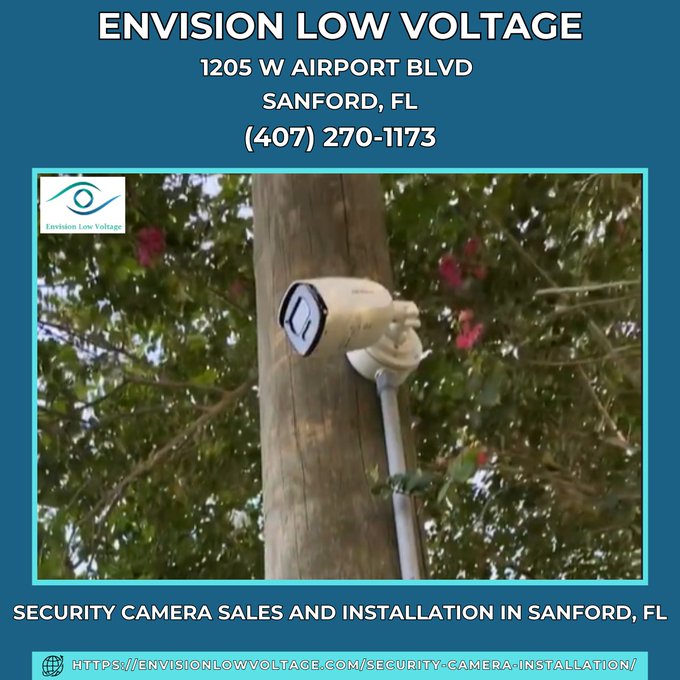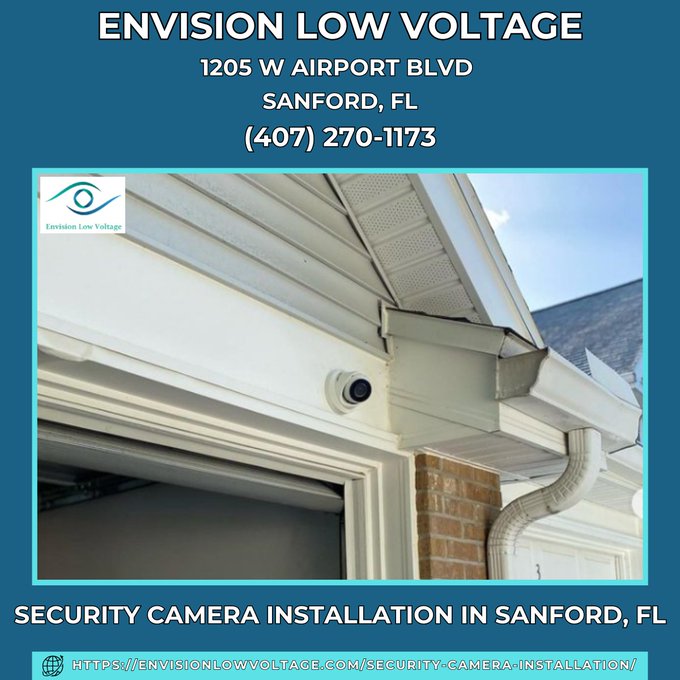Introduction
In today’s world, security is a top priority for many homeowners. Whether you live in a bustling city or a quiet suburb, the need for security cameras has never been more critical. This A Beginner's Guide to Selecting the Right Types of Indoor and Outdoor Cameras will help you navigate through the various options available, ensuring you make an informed Envision Low Voltage CCTV camera installation decision that suits your needs. With the right information at your fingertips, you'll not only enhance your home security but also gain peace of mind knowing that you’ve made a sound investment.
Understanding Security Cameras: An Overview
What Are Security Cameras?
Security cameras are devices designed to monitor and record activities for safety and surveillance purposes. They can be categorized into two main types: indoor and outdoor cameras.
Why Use Security Cameras?
The primary function of security cameras is to deter crime, provide evidence in case of incidents, and offer homeowners peace of mind. With advancements in technology, these cameras now come equipped with features such as motion detection, night vision, and remote access via smartphones.
Types of Security Cameras
Indoor Cameras
Indoor cameras are designed specifically for indoor use. They typically have features tailored for monitoring activities inside homes.
1. Dome Cameras
- Description: These are dome-shaped cameras often used in retail stores but can also be effective indoors. Advantages: Discreet appearance; difficult for intruders to tell which direction they’re facing.
2. Bullet Cameras
- Description: Long and cylindrical in shape; ideal for monitoring specific areas. Advantages: Excellent long-range viewing capabilities; often weather-resistant.
3. PTZ Cameras (Pan-Tilt-Zoom)
- Description: These cameras can be remotely controlled to pan, tilt, or zoom in on specific areas. Advantages: Versatile use; perfect for large spaces needing comprehensive coverage.
Outdoor Cameras
Outdoor cameras are built to withstand weather conditions while providing robust security features.
1. Weatherproof Bullet Cameras
- Description: Designed specifically to endure rain, snow, and extreme temperatures. Advantages: High durability; excellent image quality even in harsh conditions.
2. Floodlight Cameras
- Description: These integrate floodlights with surveillance capabilities. Advantages: Deters intruders with bright lights; dual functionality as lighting and surveillance.
3. Wireless Outdoor Cameras
- Description: Easy to install without complicated wiring setups. Advantages: Flexible placement options; convenient for DIY installation.
Key Features to Consider When Choosing Security Cameras
Resolution Quality
Higher resolution means clearer images. Most common options include:
- 1080p HD 4K Ultra HD
Night Vision Capabilities
Look for models that offer infrared night vision to ensure visibility after dark.
Motion Detection Alerts
Choose cameras that send real-time alerts when movement is detected.
Two-Way Audio Functionality
This allows you to communicate through the camera using your smartphone or other devices.
Installation Options: DIY vs Professional Help
Can I Install Security Cameras Myself?
Absolutely! Many modern systems offer user-friendly installation processes that don’t require professional expertise.
Do You Need an Electrician to Install Security Cameras?
It depends on the type of system you choose. Wireless systems usually don’t need electrical work, while wired systems might require professional assistance for optimal setup.
How Much Should Security Camera Installation Cost?
When considering installation costs:
- DIY systems range from $50-$300. Professional installations could vary between $100-$500 depending on system complexity and labor rates.
How Long Does It Take to Install a Security Camera?
Installation time varies:
- DIY installations can take anywhere from 1–4 hours based on experience. Professional installations typically take less time due to expertise (often within 1–2 hours).
Do Security Cameras Add Value to Home?
Yes! Installing security cameras can increase your home's appeal by enhancing its safety features—a significant factor in real estate value assessments.
Monthly Costs Associated with Home Security Systems
How Much Does ADT Security Cameras Cost Per Month?
ADT averages around $36-$60 monthly depending on service packages selected which often include monitoring services http://downtown-seattle16.yousher.com/diversity-in-sanford-florida-exploring-its-cultural-richness along with equipment rentals.
Do All Home Security Cameras Have Monthly Fees?
Not all systems require fees—many DIY solutions enable local storage without ongoing costs!
Wireless vs Wired Security Systems
Is It Better to Have Wired or Wireless Security Cameras?
Both have pros and cons:
- Wired systems generally offer stable connections but involve more complex installations. Wireless solutions are easier to set up but may face connectivity issues if WiFi signals weaken over distance or due to obstacles.
Common Questions About Home Security Systems
FAQs
1. Do home security cameras deter theft?
Yes! The mere presence of visible security cameras acts as a deterrent against potential intruders looking for easy targets.
2. Where should you put security cameras in your home?
Ideal spots include entrances (front door/back door), driveways, garages, and any vulnerable areas like ground-floor windows.
3. How many security cameras do I need around my house?
It depends on property size; generally 2–4 cameras cover most homes effectively without gaps in surveillance coverage.
4. Do home security cameras slow down internet?
While they consume bandwidth, modern systems are optimized not significantly impact overall internet performance unless multiple high-resolution streams occur simultaneously.
5. Are expensive security cameras worth it?
High-end models often offer advanced features (better resolution, night vision); however, assess your needs before splurging—sometimes mid-range options suffice!
6. Can I use my existing Wi-Fi network for wireless camera installation?
Yes! Most wireless indoor/outdoor cameras connect seamlessly with home Wi-Fi networks enabling remote access via mobile apps or web portals!
Conclusion
Choosing the right types of indoor and outdoor cameras doesn’t have to be overwhelming! By understanding your specific needs—be it installing a few simple indoor units or setting up a comprehensive outdoor surveillance system—you can create an effective home security strategy tailored just for you! Whether opting for professional installation or taking matters into your own hands with DIY methods—what matters most is ensuring safety remains paramount in every decision made during this process!
With this guide at hand—a step towards securing peace-of-mind has never been easier! Remember: investing wisely today safeguards tomorrow’s tranquility!

